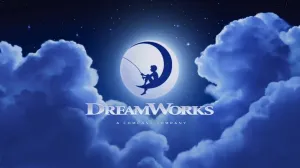Cult of the Lamb is a dark retelling of the 2022 indie video game hit that expands on the plot of the game while also providing some extra personality to its main characters. The new series, written by Alex Paknadel and illustrated by Troy Little, provides a new entry point for the uninitiated, explaining the core concept of the game’s world and the central conflict between the Lamb and the Old Faith in a fast-moving process. The comic succeeds largely by understanding the relative strengths of the video game but not recreating it beat for beat, which ultimately provides fans something they can enjoy even as the comic stands on its own two feet.
Videos by ComicBook.com
Developed by Massive Monster, Cult of the Lamb is a darkly sinister roguelite video game in which players control the founder of a cult dedicated to the eldritch entity The One Who Waits. In exchange for founding a religion based on its worship, the titular Lamb (an actual anthropomorphic lamb) is granting extraordinary powers along with the continuous ability to cheat death. While the Lamb is driven out of revenge against the Old Faith, whose leaders ordered them killed, they are faced with a series of dark choices on how to guide their Cult, choosing whether to embrace ritualistic murders, influence followers through the use of drugs, or even force followers to engage in reprogramming. The game received plenty of praise during its release, in part because of the game’s unique aesthetic that combined cute creatures with a very dark, horror-focused story.
The Cult of the Lamb comic (funded via a successful Kickstarter campaign) seemingly understands that it needs to stay true to certain elements of the source, with Little’s art seamlessly adapting the style of the game and Paknadel crafting a gruesome story that hits all of the dark beats of the original game. While Cult of the Lamb had a sort of dark humor due to the novel mix of cutesy animals and cults and mass slaughter, that tone doesn’t carry through in the comic, mostly because comics and video games are very different mediums. Paknadel and Little could have chosen to fill the comic with more cutesy visual gags or goofy dialogue, but instead the pair opted for a more serious and somber tone that I think really captures of the spirit of the game and lets the sinister undertones stand out. The comic doesn’t necessarily take itself too seriously, but its creators could have easily opted for a story that simply caters to the fandom and instead they opted to use the source material to craft something both familiar and new.
Perhaps the most interesting take on the comic is how it gives Lamb a true personality. In the video game, Lamb was a player stand-in, a blank canvas on which the player could make their own choices and assign their own personality within the game. In the comic, Lamb is driven by revenge and bristles at the thought of leading innocents down the dark path of worshipping The One Who Waits. While Lamb and Ratau had a conflict-free relationship in the game, the comic provides the pair with much more tension, as Ratau rankles at Lamb’s reluctance to seize his destiny, while Lamb resents the pushes and instruction Ratau gives. The comic offers the possibility of more deviations in the future, especially with a last page portent of betrayal.
Cult of the Lamb could have been a cash grab, a way to simply continue a cult-smash video game’s fandom. Instead, Paknadel and Little actually examine the source material and craft a new take on the game’s story, one that will likely follow the same beats as the original but explores that story in ways the game could not.
Published by Oni Press
On June 5, 2024
Written by Alex Paknadel
Art by Troy Little
Colors by Nick Filardi
Letters by Crank
Cover by Tory Little and Nick Filardi








